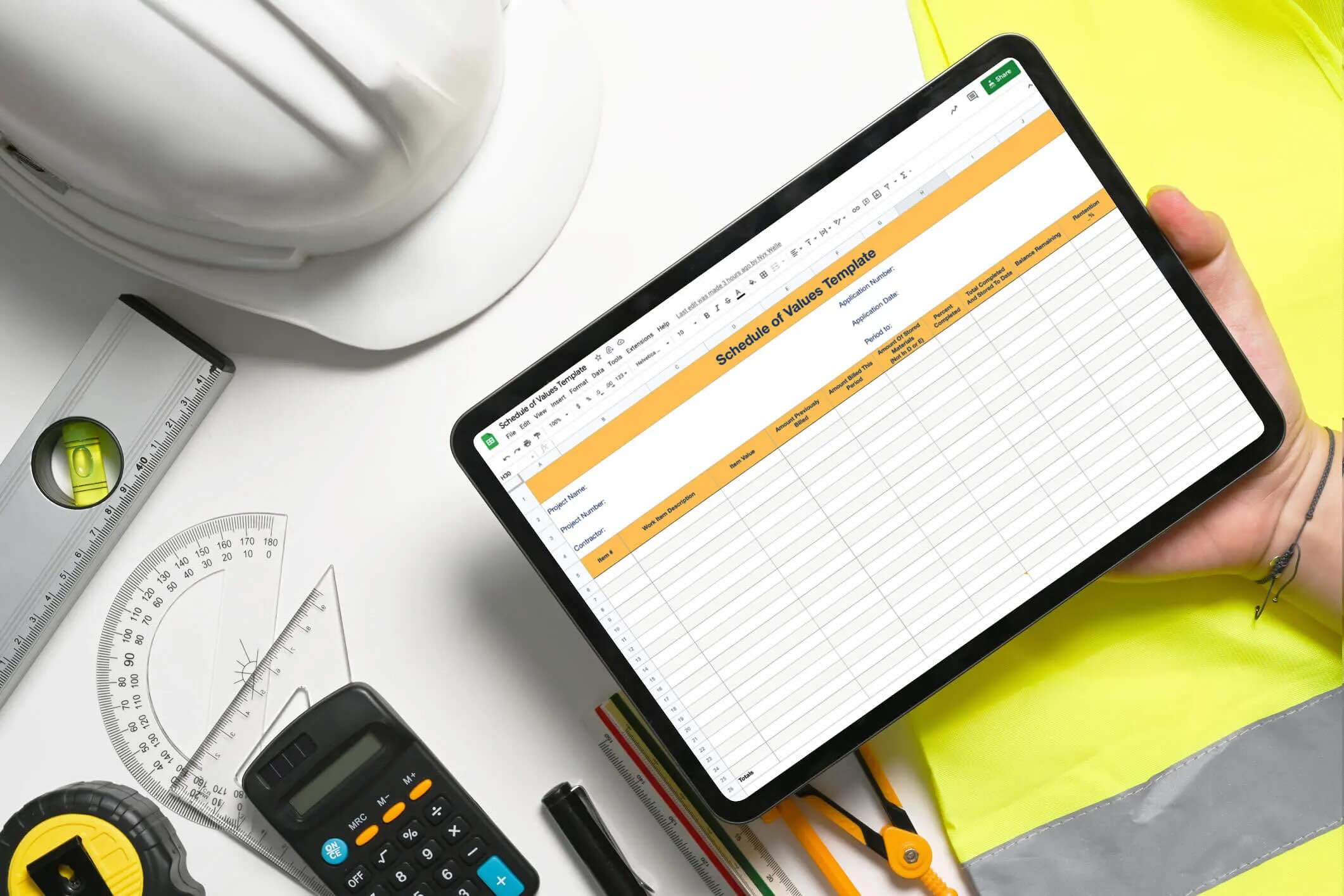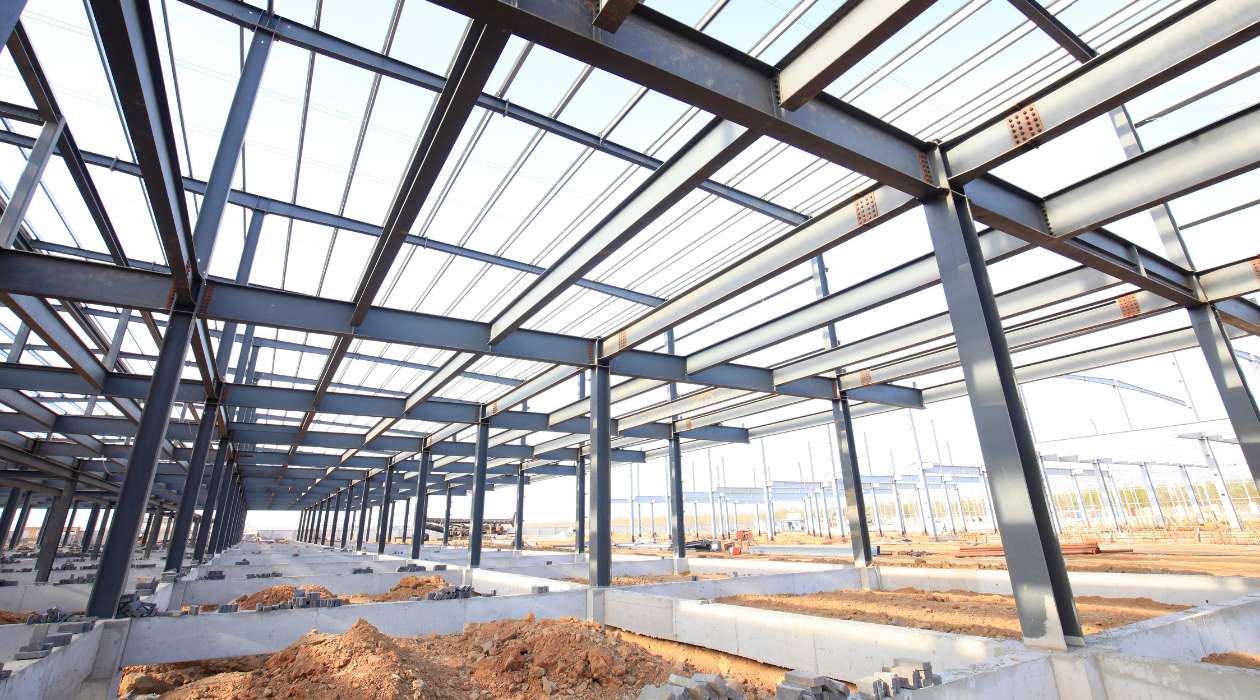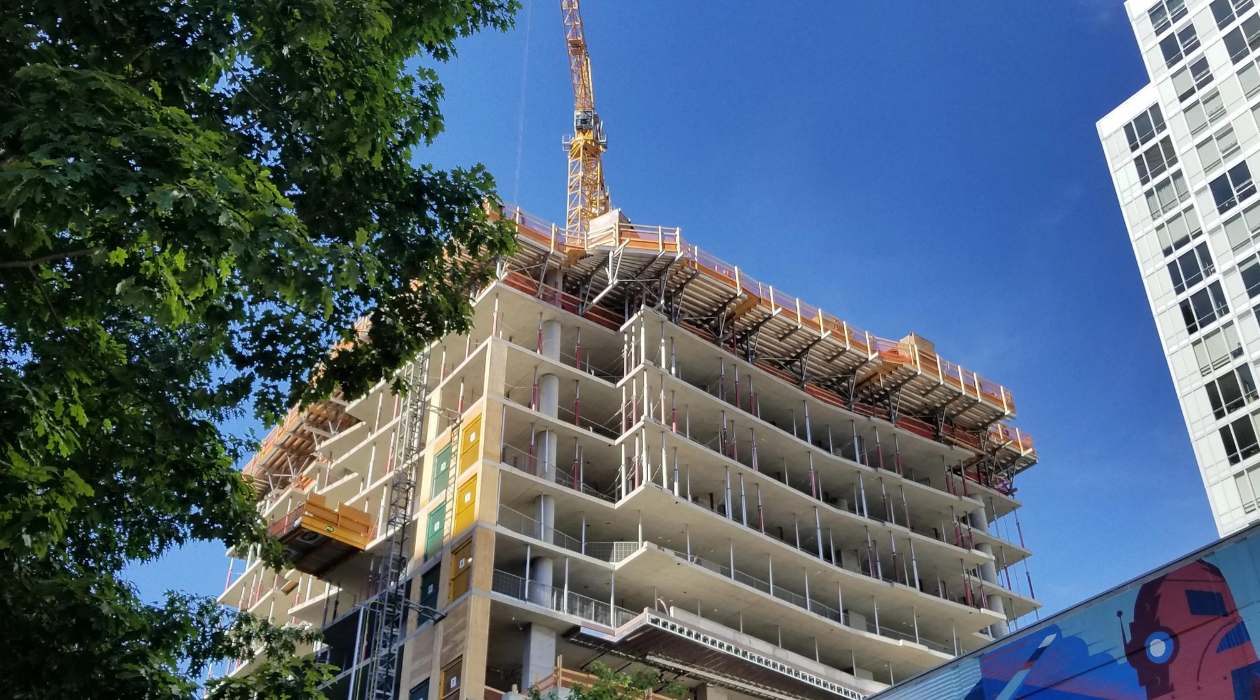Home>diy>Building & Construction>Who Determines The Type Of Contract To Be Used On A Construction Project?


Building & Construction
Who Determines The Type Of Contract To Be Used On A Construction Project?
Modified: December 7, 2023
Learn who has the authority to decide on the type of contract for a building construction project and ensure successful completion.
(Many of the links in this article redirect to a specific reviewed product. Your purchase of these products through affiliate links helps to generate commission for Storables.com, at no extra cost. Learn more)
Introduction
When embarking on a construction project, one of the crucial decisions that needs to be made is determining the type of contract to be used. The contract serves as a legally binding agreement between the owner of the project and the party responsible for its construction. It outlines the scope of work, payment terms, project timeline, and other essential terms and conditions.
The choice of contract type is influenced by various factors, including the specific needs of the project, the level of collaboration desired, and the risks involved. It is essential for all parties involved to understand their roles and responsibilities under the chosen contract, as it sets the framework for the entire project.
In most cases, determining the type of contract is a collaborative effort that involves input from the owner, architect/engineer, contractor, and sometimes a construction manager. Each party brings their expertise and perspective to the table, considering factors such as project complexity, cost, quality, and schedule requirements. Let us delve into the key players who influence the choice of contract type, and explore their roles in more detail.
Key Takeaways:
- The choice of contract type for a construction project is influenced by factors such as project complexity, collaboration needs, risk tolerance, timeline, budget, and quality standards. Clear communication and collaboration among stakeholders are crucial in making an informed decision.
- The owner, architect/engineer, contractor, and construction manager play vital roles in determining the contract type. Their input, expertise, and understanding of project requirements are essential in selecting the most appropriate contract approach. Effective collaboration and alignment of expectations are key to successful project delivery.
Owner
The owner is the individual or organization that initiates the construction project and ultimately bears the financial responsibility for its completion. As the primary stakeholder, the owner has a significant influence on determining the type of contract to be used.
One of the main considerations for the owner is the level of control they wish to maintain over the project. Some owners prefer a more hands-on approach, while others may wish to delegate more responsibility to the contractor or construction manager. This preference often determines whether to opt for a traditional contract or a more collaborative approach.
The owner’s level of risk tolerance is another crucial factor in contract selection. If the owner wishes to minimize risk, they may opt for a lump-sum or fixed-price contract. This type of contract places the financial burden and risk on the contractor, as they are responsible for completing the project within the agreed-upon price. On the other hand, if the owner is willing to share some of the project risks with the contractor, they may choose a cost-plus or time and materials contract.
The owner’s desired level of flexibility and ability to make changes during the construction process also influences the contract type. If the owner anticipates the need for design changes or additional work, a contract that allows for modifications, such as a unit price or cost-plus contract, may be more suitable.
Furthermore, the owner considers their budget and project timeline when selecting the contract type. Different contracts have varying payment structures and project schedules. For instance, a lump-sum contract typically requires an upfront payment before work commences, while a cost-plus contract may involve monthly payments based on incurred costs.
Ultimately, the owner’s input is crucial in determining the contract type as they have the final say in the project’s direction and objectives. Their priorities, risk tolerance, level of control, and budgetary considerations all play a significant role in guiding the decision-making process.
It is important for the owner to communicate their goals and expectations clearly to the architect/engineer, contractor, and other project stakeholders. This collaboration ensures that the chosen contract aligns with the owner’s vision and sets the stage for a successful construction project.
Architect/Engineer
The architect/engineer is a key player in the construction project who is responsible for designing and overseeing the construction process. They play a crucial role in helping determine the type of contract that will best meet the project’s needs.
One of the primary considerations for the architect/engineer is the complexity of the project. If the project involves intricate design elements or unique engineering requirements, a contract that allows for flexibility and collaboration may be more suitable. In such cases, the architect/engineer may recommend a design-build contract or a construction management contract, where they can work closely with the contractor from the early stages of the project to address design challenges and ensure the desired outcomes are achieved.
The architect/engineer also considers their level of involvement in the construction process and the desired relationship with the contractor. If they prefer a more collaborative approach and want to maintain control over the project’s design, they may recommend a contract type that allows for more collaboration and input, such as a cost-reimbursable or cost-plus contract. This way, they can work hand in hand with the contractor to make necessary design adjustments and address any challenges that arise during construction.
Another factor the architect/engineer considers is the project’s timeline. They work closely with the owner to establish project milestones and deadlines. If the project requires a fast-track construction process or phased completion, the architect/engineer may recommend a contract type that allows for flexibility and adjustments, such as a construction management contract or a time and materials contract.
Additionally, the architect/engineer considers the owner’s budget and risk tolerance when advising on the contract type. They aim to strike a balance between delivering a high-quality design and ensuring the project remains financially viable. They may suggest a contract type that aligns with the owner’s budgetary constraints and risk tolerance, such as a lump-sum or fixed-price contract, where the contractor assumes more financial risk.
The architect/engineer’s expertise in construction management and their understanding of the project’s unique requirements make them invaluable in determining the appropriate contract type. Their input helps ensure that the contract adequately addresses design considerations, project complexity, timeline requirements, and budgetary constraints.
It is crucial for the architect/engineer to communicate effectively with the owner, contractor, and other project stakeholders to ensure the chosen contract best aligns with the project’s objectives and successfully delivers the desired outcome.
Contractor
The contractor is a crucial player in the construction project, responsible for executing the construction work outlined in the contract. Their expertise and input heavily influence the determination of the contract type.
One of the primary considerations for the contractor is the level of risk they are willing to undertake. Different contract types allocate varying levels of risk between the owner and the contractor. For instance, a lump-sum or fixed-price contract places a higher burden of risk on the contractor, as they must complete the project within the agreed-upon price. On the other hand, a cost-plus or time and materials contract allows for more flexibility and may involve additional compensation for unforeseen challenges or changes during construction.
The contractor also considers their expertise and capabilities when suggesting the contract type. If they have extensive experience in managing complex projects, they may recommend a design-build or construction management contract, where they can contribute their expertise during the design and planning stages. This approach allows for more collaboration and seamless coordination between the contractor and the architect/engineer.
The contractor evaluates the project’s timeline and schedule requirements when suggesting the contract type. If the project requires an aggressive timeline or phased completion, the contractor may propose a contract that allows for flexibility in scheduling and adjustments, such as a construction management or a time and materials contract.
Furthermore, the contractor considers their cash flow and payment structure preferences. Different contract types have varying payment terms and schedules. For instance, a lump-sum contract may involve milestone payments based on completed stages, while a cost-plus contract may require monthly reimbursement for incurred costs. The contractor’s financial considerations play a significant role in determining the contract type that works best for their business model.
The contractor’s input is crucial in ensuring the chosen contract type aligns with their capabilities, expertise, and risk tolerance. They work closely with the owner and architect/engineer to provide insight into the construction process, identifying any challenges or opportunities for value engineering or cost savings.
Their experience in managing construction projects and their understanding of the project’s requirements make them invaluable in determining the appropriate contract type. Their expertise helps ensure that the contract type selected allows for successful project execution, on-time completion, and adherence to quality standards.
Clear communication between the contractor, owner, architect/engineer, and other project stakeholders is essential to establish mutual understanding and align expectations. Collaboration from the early stages of the project ensures that the selected contract type meets the project’s needs and sets the stage for a successful construction endeavor.
Construction Manager
The construction manager is a professional hired by the owner to oversee and manage the construction project. Their role is to ensure the successful completion of the project within budget, on schedule, and to the satisfaction of the owner. The construction manager’s input is vital in determining the type of contract that will best suit the project’s needs.
One of the key considerations for the construction manager is the desired level of involvement in the project. If the construction manager wishes to have a high level of control and oversight throughout the entire construction process, they may recommend a construction management contract. This type of contract allows the construction manager to collaborate closely with the owner, architect/engineer, and contractors from the initial planning stages to the completion of the project, ensuring effective communication and coordination.
The construction manager also assesses the project’s complexity and the need for specialized expertise. If the project involves intricate design elements, unique construction methods, or coordination of multiple trades, the construction manager may advise a collaborative contract, such as a design-build or integrated project delivery (IPD) contract. This allows for early involvement of all project stakeholders, including the construction manager, in the design and planning stages, fostering better coordination and efficient problem-solving throughout the construction process.
Timeline and schedule requirements are another crucial consideration for the construction manager. If the project demands an accelerated schedule or phased completion, the construction manager may recommend a contract type that allows for flexibility and adjustments, such as a construction management contract. This way, they can closely monitor the progress, ensure timely completion of project milestones, and mitigate potential delays.
Cost management and cost control are significant factors considered by the construction manager when determining the contract type. They work closely with the owner to establish a realistic budget for the project and recommend a contract type that aligns with the budgetary requirements. This may involve selecting from contract types such as lump-sum, cost-plus, or guaranteed maximum price (GMP), depending on the level of cost certainty desired and the risk-sharing arrangement with the contractors.
The construction manager’s expertise in project management and their understanding of the project’s unique requirements make them instrumental in determining the appropriate contract type. They provide valuable insights into construction methodologies, cost optimization, and risk mitigation strategies.
Effective communication with the owner, architect/engineer, contractor, and other project stakeholders is crucial to ensure that the selected contract type meets the project’s objectives and expectations. The construction manager’s involvement from the early stages of the project helps align the contract type with the project’s needs, leading to successful project delivery and client satisfaction.
The type of contract used on a construction project is typically determined by the project owner or client in consultation with their legal and financial advisors, taking into consideration factors such as project scope, budget, and risk allocation.
Read more: How To Make A Contract For Construction
Project Delivery Method
The project delivery method refers to the overall approach taken to organize, coordinate, and execute a construction project. It encompasses the contractual relationships between the owner, architect/engineer, contractor, and other project stakeholders. The project delivery method has a significant influence on determining the type of contract to be used.
There are several commonly used project delivery methods, each with its own characteristics and implications for the selection of contract type. Let’s explore some of the most prevalent project delivery methods:
1. Design-Bid-Build (Traditional Method):
In this method, the owner contracts separately with the architect/engineer to design the project and with the contractor to construct it. The architect/engineer is responsible for preparing the design documents, while the contractor bids on the project based on these documents. This method typically involves a lump-sum or fixed-price contract between the owner and the contractor.
2. Design-Build:
In the design-build method, the owner contracts with a single entity, the design-build contractor, who is responsible for both the design and construction of the project. This method offers a more streamlined and collaborative approach, as the contractor and architect/engineer work together from the project’s inception. Typically, a cost-reimbursable or cost-plus contract is used for design-build projects.
3. Construction Management (CM):
In the construction management method, the owner hires a construction manager to oversee and coordinate the project. The construction manager acts as the owner’s representative and collaborates closely with the architect/engineer and contractors. The construction manager may recommend various contract types depending on the project’s specific needs and objectives. Common contract types used in this method include cost-plus, guaranteed maximum price (GMP), or a combination of both.
4. Integrated Project Delivery (IPD):
IPD is a collaborative project delivery method that involves close collaboration between the owner, architect/engineer, and contractor from the project’s early stages. The project team enters into a multi-party agreement, known as the IPD contract, which encourages a high level of collaboration, risk-sharing, and shared decision-making. IPD contracts often include cost-sharing provisions and incentives for meeting project goals.
The choice of project delivery method plays a significant role in determining the type of contract to be used. Collaborative project delivery methods, such as design-build and IPD, often favor contract types that foster collaboration, flexibility, and shared risk. Traditional methods like design-bid-build may involve more straightforward contract types focused on fixed prices and scope of work.
Furthermore, the project delivery method chosen influences the level of integration and communication among project stakeholders. It determines how responsibilities, risks, and decision-making authority are distributed throughout the project.
It is essential for the owner, architect/engineer, contractor, and construction manager to carefully consider the project’s requirements, desired level of collaboration, timeline, and risk allocation when selecting the project delivery method. This thoughtful evaluation sets the stage for a successful construction project and effective contract administration.
Contract Documents
Contract documents are critical components in any construction project as they serve as the foundation for the legal agreement between the owner and the contractor. These documents outline the rights, responsibilities, and obligations of each party involved, as well as the scope of work, project specifications, timeline, and payment terms. The contract documents help ensure a clear understanding between the owner and the contractor and provide a framework for successful project execution.
There are several key contract documents commonly used in construction projects:
1. Contract Agreement:
The contract agreement is the primary document that formalizes the relationship between the owner and the contractor. It includes essential elements such as the project scope, contract duration, payment terms, dispute resolution mechanisms, and any specific provisions or requirements agreed upon between the parties. This document sets the overall terms and conditions for the project.
2. Drawings and Specifications:
Drawings and specifications are detailed documents that describe the project’s design and technical requirements. Drawings provide graphical representations of the project, including plans, elevations, and sections, while specifications outline the materials, building codes, quality standards, and construction methods to be followed. Both drawings and specifications play a crucial role in defining the project scope and guiding construction activities.
3. General Conditions:
General conditions are standard provisions that apply to the construction project. They cover administrative, contractual, and procedural aspects such as project scheduling, change orders, warranties, insurance requirements, safety regulations, and dispute resolution procedures. General conditions help establish a common framework and address common issues encountered in construction projects.
4. Supplementary Conditions:
Supplementary conditions are project-specific provisions that amend or supplement the general conditions. These may include specific requirements unique to the project, such as environmental considerations, performance guarantees, or unusual site conditions. Supplementary conditions help tailor the contract to the specific needs and circumstances of the project.
5. Special Conditions:
Special conditions are additional clauses or provisions that address unique circumstances or requirements of the project. They may include specific requirements related to permits, inspections, testing, or specialized equipment. Special conditions provide further clarification or modification to the contract agreement as necessary.
These contract documents collectively form the contractual backbone of a construction project. They provide a clear understanding of the project scope, specifications, responsibilities, and expectations for all parties involved. It is crucial that the contract documents are thoroughly reviewed, understood, and agreed upon by the owner and the contractor before commencing the project.
To ensure successful project execution, the contract documents should accurately reflect the project’s goals, timeline, budget, and quality standards. Any modifications or changes to these documents during the course of the project should be duly documented through formal change orders or amendments to maintain clarity and transparency.
Effective communication, collaboration, and adherence to the contract documents are key to minimizing misunderstandings, disputes, and delays during the construction process. Regular review and proper administration of the contract documents throughout the project help ensure that the project remains on track and successfully meets the owner’s goals and expectations.
Factors Influencing Contract Type Decision
Determining the appropriate contract type for a construction project requires careful consideration of various factors. The decision should align with the project’s unique characteristics, the desired level of collaboration, and the risk-sharing preferences of the owner and other project stakeholders. Below are some key factors that influence the choice of contract type:
1. Project Complexity:
The complexity of the project is a crucial factor in selecting the contract type. Projects with intricate design elements, specialized construction techniques, or unique engineering requirements often benefit from collaborative contract types, such as design-build or integrated project delivery (IPD). These contract types allow for better coordination, early collaboration, and shared problem-solving among project stakeholders.
2. Level of Collaboration:
The desired level of collaboration between the owner, architect/engineer, and contractor can influence the contract type decision. Some owners prefer a more collaborative approach, while others may opt for a more traditional, hands-off role. Depending on the desired level of collaboration and decision-making authority, contract types like design-build, construction management, or IPD may be recommended.
3. Owner’s Risk Tolerance:
The owner’s risk tolerance plays a significant role in determining the contract type. Owners who wish to minimize their risk exposure may opt for lump-sum or fixed-price contracts, where the contractor assumes greater risk for cost overruns or delays. On the other hand, owners who are willing to share some risk with the contractor may choose cost-plus or guaranteed maximum price (GMP) contracts.
4. Time Constraints:
Project timelines and schedule requirements also influence the contract type decision. If the project has an aggressive timeline or phased completion, contract types that allow for flexibility and adjustments, such as construction management or time and materials contracts, may be suitable. These contract types offer greater flexibility in scheduling and adaptable project execution.
5. Budget and Cost Management:
The project budget and cost management considerations impact the choice of contract type. A lump-sum or fixed-price contract can provide cost certainty and help manage the budget. Alternatively, cost-plus or target-cost contracts may be preferred if there is room for design changes or if the project has uncertain or evolving requirements.
6. Quality Standards:
The desired level of quality control and adherence to certain standards can influence the contract type decision. Some contract types, such as design-build or IPD, facilitate closer collaboration and shared responsibility for achieving specified quality standards. Other contract types may require additional quality assurance provisions and inspections.
7. Contract Administration Capabilities:
The owner’s and contractor’s capabilities in contract administration and project management are essential considerations. Some contract types, such as cost-reimbursable or cost-plus, require more extensive documentation and financial tracking. The ability to manage and administer the chosen contract type should align with the project’s requirements and the parties’ expertise.
It is important to note that these factors are not mutually exclusive, and multiple factors often overlap in influencing the contract type decision. The selection of the most appropriate contract type requires careful evaluation, collaboration, and effective communication among the owner, architect/engineer, contractor, and other project stakeholders.
By considering these factors and aligning the contract type with the project’s objectives, complexities, risk-sharing preferences, and timeline requirements, the project team can set the foundation for a successful construction project and foster a positive working relationship among all parties involved.
Conclusion
Selecting the appropriate contract type for a construction project is a crucial decision that influences the project’s success, risk allocation, collaboration levels, and overall outcomes. The determination of the contract type involves input from the owner, architect/engineer, contractor, and construction manager, considering various factors such as project complexity, desired level of collaboration, risk tolerance, timeline requirements, budget considerations, quality standards, and contract administration capabilities.
The owner’s priorities, risk tolerance, control preferences, and budgetary constraints play a significant role in determining the contract type. They ultimately bear the financial responsibility for the project and often have the final say in selecting the contract approach. The architect/engineer contributes their expertise in design, construction methods, and project management, considering the project’s complexity, timeline, and desired level of collaboration. The contractor evaluates their risk exposure, cost management capabilities, and construction expertise when advising on the contract type. The construction manager ensures efficient project execution, adherence to timeline goals, and effective coordination of project stakeholders based on the selected contract type.
The project delivery method also influences the contract type decision, with options including design-bid-build, design-build, construction management, and integrated project delivery. Each method offers different levels of collaboration, risk-sharing, and coordination among project stakeholders.
Clear and effective communication among all parties involved is essential in selecting the most appropriate contract type. Collaboration, understanding project objectives, and aligning expectations will help ensure the chosen contract type meets the project’s unique requirements and maximizes the chances of successful project delivery.
By carefully evaluating the project’s complexity, collaboration needs, risk tolerance, timeline, budgetary considerations, and quality standards, the project team can make an informed decision on the contract type. This decision will pave the way for a well-structured and mutually beneficial contractual arrangement between the owner and the contractor, setting the stage for a successful construction project from start to finish.
Ultimately, the selection of the right contract type is a critical step in establishing a solid foundation for project success. It lays the groundwork for effective collaboration, risk management, and project execution, ensuring that the construction project achieves its objectives while satisfying the needs and expectations of all stakeholders involved.
Frequently Asked Questions about Who Determines The Type Of Contract To Be Used On A Construction Project?
Was this page helpful?
At Storables.com, we guarantee accurate and reliable information. Our content, validated by Expert Board Contributors, is crafted following stringent Editorial Policies. We're committed to providing you with well-researched, expert-backed insights for all your informational needs.















0 thoughts on “Who Determines The Type Of Contract To Be Used On A Construction Project?”